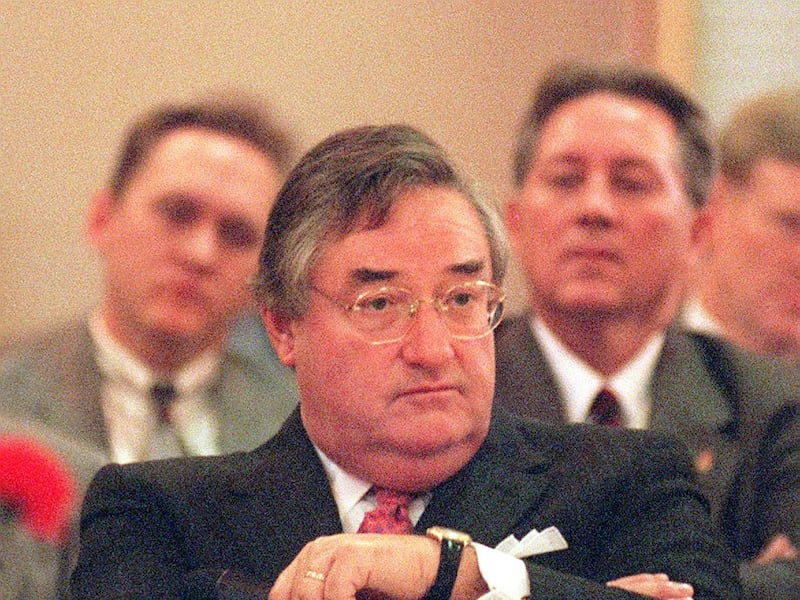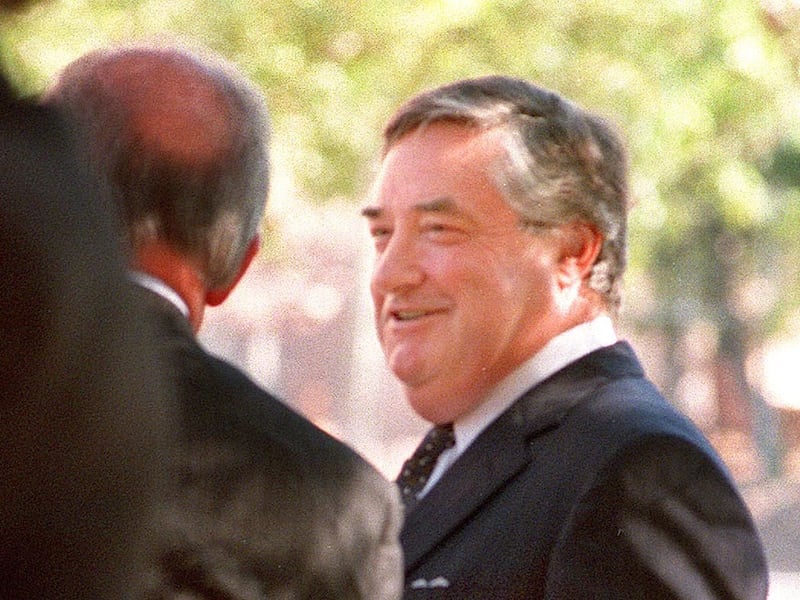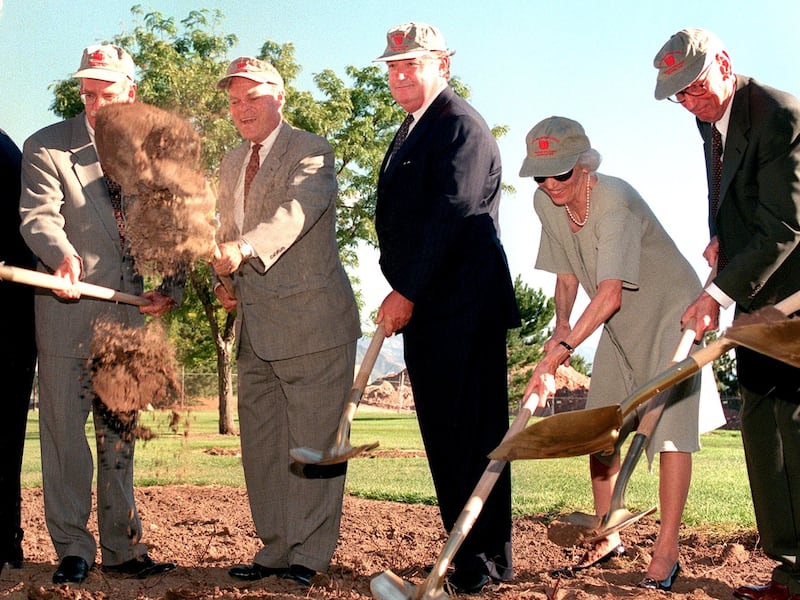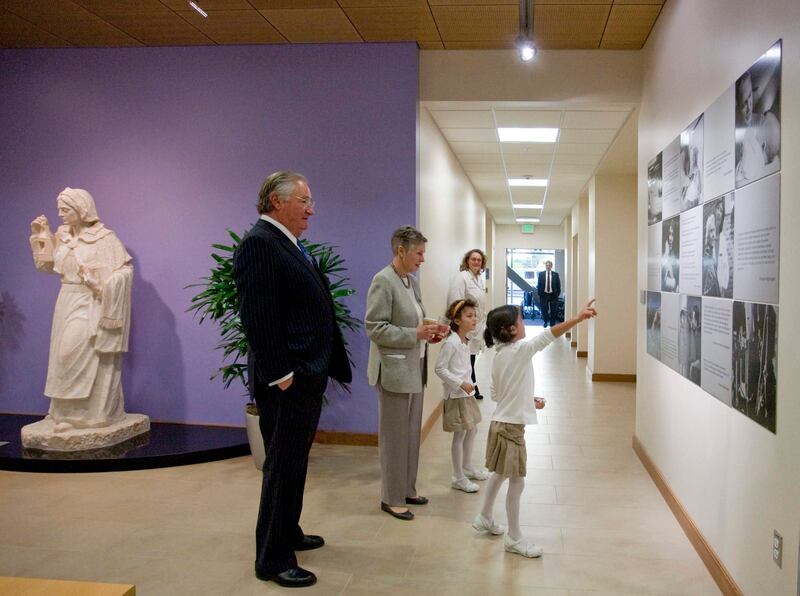SALT LAKE CITY — It was with some irony that on the very day that Jon Huntsman Sr. passed away, another philanthropist-billionaire from Utah also died, but with not as much notice. This seemed entirely fitting given his reclusive nature.
Ian Cumming died Friday in Jackson, Wyoming, where he lived most of the time, at the age of 77, three years younger than Huntsman. Both men grew up in humble circumstances, both started companies that became worth billions, both became heavily involved in politics (though in opposing parties), and both, remembering their backgrounds, turned to philanthropy.
Much was known about Huntsman, who was open with the press and even wrote an autobiography and led a very public life. It is difficult to find even a quote from Cumming, who avoided the media.
“He was a recluse when it comes to media and fanfare,” said former Democratic state legislator Scott Howell, who considered Cumming a mentor and friend. “He was a more self-actualized person who couldn’t see the value of that or what it meant to be known in the media.”
In keeping with the private nature of Cumming, his family instructed employees at Snowbird Ski Resort — of which the Cumming family is majority owner — not to provide quotes to the media. There has been no information about the details of a funeral.
Largely behind the scenes, Cumming was involved in a wide array of activities — a wildly successful holding company, ski resorts, the Democratic Party, philanthropy. He was an active supporter of Salt Lake City’s bid for the 2002 Olympic Winter Games, serving from 1990-91 as the first chairman of the Utah Sports Authority, the entity created to oversee the spending of public money on sports facilities.
Raised in Saskatchewan, Canada, and Kansas, Cumming graduated with a degree in zoology from the University of Kansas before moving on to Harvard Business School, where he received his MBA in 1970. In 1971 he moved to Salt Lake City as a partner in Terracor, the now-defunct real estate company whose developments included, among others, Bloomington in St. George and Stansbury Park in Tooele County.
He kept Salt Lake City as his permanent address after he and a Harvard classmate and friend, Joe Steinberg, turned a company they eventually named Leucadia into one of America’s most successful investment banking firms. Steinberg manned Leucadia’s corporate offices in New York City while Cumming established its executive offices in Salt Lake City.
In 2012, when Cumming retired at age 72 after 34 years at the helm, Leucadia National Corp. had a reported net worth of $6.8 billion, with a compounded annual growth rate of 18.2 percent.
Noting that Leucadia’s long-term return to investors equaled those of the legendary Warren Buffett, the New York business publication Crains wrote: “While Mr. Cumming’s track record compares very nicely with Mr. Buffett’s, he’s as unknown as the Oracle of Omaha is famous.”
Cumming took “low profile” to a new low. In 1998, Deseret News business editor Max Knudson, after failing to reach Cumming for a comment, wrote, “He never talks to the news media (not even Forbes) and is even known to go to great lengths to avoid having his picture taken.”
“Joe and Ian are not terrific chatterboxes,” wrote Adam Lashinsky of Fortune magazine when profiling the pair — without talking to them — in 2004. “They almost never give interviews, nor do they answer questions from investors.”
In their final annual letter to Leucadia investors upon their retirement in 2012, Cumming and Steinberg jointly wrote, “We have always preferred to make money, rather than headlines.”
But if his public profile was low by design, Cumming was hardly invisible behind the scenes.
“He was not reclusive at all in the sense that he was always out and about. He was doing things all the time,” said Bud Scruggs, the former chief of staff to the late Utah Gov. Norm Bangerter who served as a senior executive at Leucadia for more than a decade and knew Cumming well.
Outside of business, Cumming directed much of his attention to the University of Utah. As a member of the Utah Board of Regents, he was instrumental in the hiring of Arthur K. Smith and J. Bernard Machen as successive presidents at the U. He directed a large part of his philanthropy to the university, including sizable donations to the David Eccles School of Business, in honor of his mentor C. Roland Christensen, and to the John A. Moran Eye Center, where he also served on the advisory board.
In 2011 he broke with his tradition of anonymity, of sorts, when he surprised his wife Annette on her 60th birthday with a $5 million legacy donation in her name to the University of Utah School of Nursing, resulting in the nursing college’s renovated headquarters building being named after its 1968 graduate, Annette Poulson Cumming.
“Ian was remarkably generous, and his influence will be greatly missed at the university,” said University of Utah President David W. Pershing in a statement.
Cumming was a major behind-the-scenes mover and donor in the Democratic Party. Howell recalls a time when Cumming invited him to his home on South Temple and finding nearly a dozen of the nation’s top Democratic leaders there — among them, Harry Reid, Chuck Schumer, Tom Daschle and Dick Durbin.
“It was something. That was quite an experience,” remembered Howell. “Ian had great relationships with those men. I believe Ian was the one who set up Jon Huntsman Jr. to become ambassador in a great show of bipartisanship.”
Howell recalled a time when Cumming came to his aid. While serving in the Utah Legislature, he was sponsoring several key bills at the height of a legislative session when he learned that his grandmother had passed away in Blackfoot, Idaho. “I don’t know how I can leave now,” he told Cumming.
As Howell tells it, “Ian said, ‘You always put family first. I’ll have my jet take you.’ He asked me what time the funeral was and then told me to be at the airport at a certain time. So he flew me to Blackfoot, Idaho, in a Gulfstream jet and I was able to make it back in time for the afternoon legislative session. It wouldn’t have happened if it weren’t for Ian.”
Howell also recalled a time when he was running for the U.S. Senate against Orrin Hatch. Near the end of the campaign, both he and Cumming realized he couldn’t win. “I was ready to quit, to just walk away,” says Howell. “What was the point? But Ian told me never give up, never quit. He told me, ‘You’ve got to hang in there, that even though victory might not happen, there are victories that come in other forms.
"I never regretted completing that run. I would’ve been a loser if I had left early. The blessings that come from running a statewide election, visiting all these places around the state, getting to look into people’s eyes. How stupid would I have been to quit? His advice was very wise.”
Howell was one of many politicians who sought counsel from Cumming. Former Salt Lake County Mayor Peter Corroon called on Cumming for advice when he ran for mayor and again when he ran for governor.
“Ian Cumming and his wife Annette have been leaders for positive change in Utah for decades,” says Corroon. “He had a brilliant business mind and he called things as he saw them. He knew people on both sides of the aisle. He had an expansive book of friends.”
Cumming’s most public profile in Utah was his connection with skiing and the Olympics. As the Utah Sports Authority’s first chairman, he helped identify and establish the sites that would be used for the Olympics. After that, he fully backed Salt Lake’s Olympic push.
“He was a supporter and a believer in the Olympics even before he was an owner of resorts,” said bid leader Tom Welch.
In 1994, Powdr Corp., a company headed by Ian’s son, John, with Ian Cumming on the board of directors, bought the ski area at Park City that would host numerous events at the Salt Lake City Games. Powdr Corp. owned Park City Mountain Resort until 2014, when it sold out to Vail Corp. That same year, the Cumming family bought majority interest in Snowbird Ski Resort, with the family of original owner Dick Bass retaining minority ownership.






